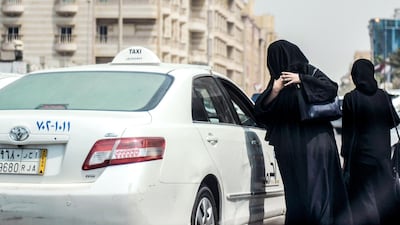Gasoline demand in Saudi Arabia - the region's largest consumer of the fuel - is set to remain robust for the medium term even as the country plans to hike prices and women start driving, analysts say.
The world's largest exporter of oil, which began to phase out subsidies in 2015 by raising the price of higher-grade petrol by 50 per cent - plans to raise the domestic prices for gasoline and jet fuel next year.
The new fuel subsidy regime is set to kick in at a time when Saudi Arabia is anticipating a slew of economic reforms including a public listing of a five per cent stake of oil major Saudi Aramco next year.
The price hike will be more of a “gradual” approach in the kingdom, said Fahad Al Turki, chief economist and head of research at Riyadh-based Jadwa Investment.
"For consumers, it [the price hike] was delayed as it was supposed to reach a reference price by 2017 but this has been pushed back to 2018," he said.
Subsidies cost the Saudi economy eight per cent of GDP in 2013 - the highest proportion for an oil exporting country, according to the IMF. Following price reforms undertaken after the slide in oil prices that hurt its oil revenue-dependent economy, the proportion of subsidy to gross domestic product had halved by 2016, according to the fund.
_______________
Read more:
Women drivers to impact ride-hailing apps in Saudi Arabia
Saudi to reap economic windfall from women drivers
_______________
Fuel demand in Saudi Arabia as well as among other GCC producers fell during 2016 and through to 2017 as enforcement of subsidy regimes curbed consumption, according to a note by BMI Research, a unit of the Fitch Group.
However, Saudi Arabia's lift of the ban on women driving, which is set to come into force in June 2018, is likely to increase demand for gasoline in the country.
"Sixty-five per cent of Saudi women plan to apply for a driving licence and start driving once the ban is lifted. With 6.5 million Saudi women aged between 20-49, it will inevitably expand both the fleet size in and more importantly miles driven," said Iman Nasseri, senior consultant at London-based consulting firm Facts Global Energy (FGE).
"With these underlying driving forces for gasoline consumption in mind, we expect gasoline demand to reach 660,000 barrels a day by 2021 in Saudi Arabia from 568,000 a day in 2016," he said.
Saudi Arabia, which is the ninth largest gasoline market in the world according to US Energy Information Administration, will continue to meet its demand through imports, despite mega-plans to add refining capacities. Demand more than doubled from around 300,000 barrels a day over a decade ago, according to EIA.
"Strong gasoline demand growth more than offsets the planned capacity expansions in Saudi and we expect the country to remain a net gasoline importer in the foreseeable future," added Mr Nasseri.


